Physical Address
304 North Cardinal St.
Dorchester Center, MA 02124
Physical Address
304 North Cardinal St.
Dorchester Center, MA 02124

You will discover ancient Rome alive and well in Mérida, Spain, where some of Europe's best-preserved classical ruins await your discovery. This UNESCO World Heritage city doesn't just display its monuments – it lets you walk through them, touch them, and experience them firsthand. From the world's longest surviving Roman bridge to intricate mosaics that still retain their lively colors, Mérida's treasures offer nine compelling reasons to add this historic gem to your travel plans.
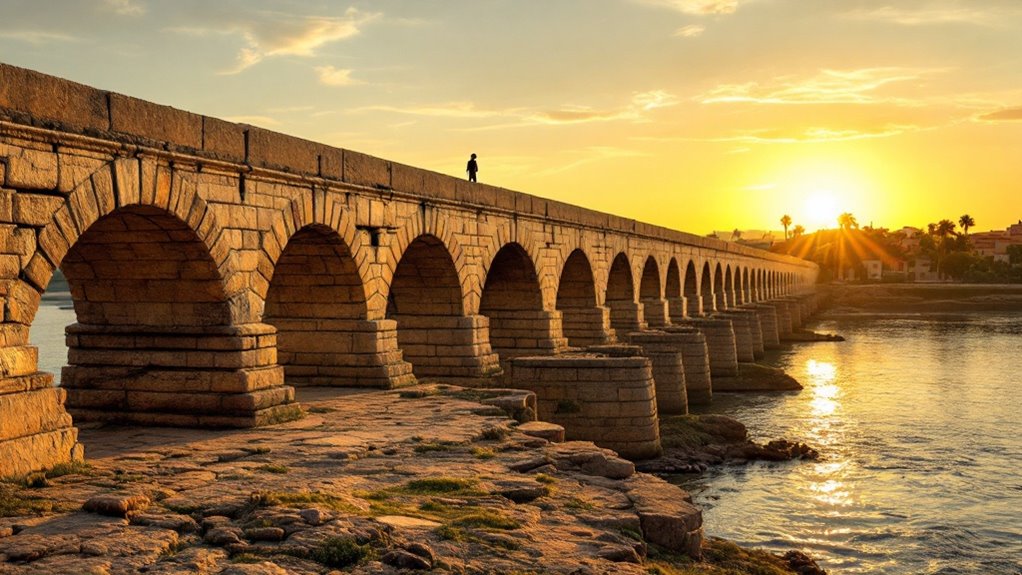
While many ancient Roman bridges have crumbled over time, Mérida's magnificent Puente Romano still spans the Guadiana River after 2,000 years. At 721 meters, it's the longest surviving ancient bridge, featuring 60 granite arches designed to withstand fierce floods and currents.
You'll walk where Roman soldiers once marched, crossing the same path that connected their colony of Emerita Augusta to Tarragona. Originally built for veteran soldier protection, the bridge helped establish one of the most important Roman settlements in Hispania.
Today, you can stroll freely across this pedestrian-only structure, taking in panoramic views of the Alcazaba fortress and modern Lusitania Bridge. Visit at night to see the bridge beautifully illuminated, or explore La Isla park beneath its arches.
Despite wars, floods, and centuries of use, this engineering marvel continues to serve its purpose while showcasing Rome's architectural genius.
From the enduring Roman bridge, a short walk leads you to Mérida's crowning architectural achievement: the Roman Theatre Complex. Built in 16-15 BC and declared a UNESCO World Heritage site, this architectural marvel once seated 6,000 spectators across three tiers. The theater's stunning structure follows Vitruvian architectural principles, making it similar to famous theaters in Dougga, Orange, and Pompeii.
Today, you'll witness its stunning Corinthian columns, marble-paved orchestra area, and impressive stage backdrop featuring statues of Roman deities.
Combined tickets give you access to the theater, amphitheater, and nearby Roman ruins for €12.
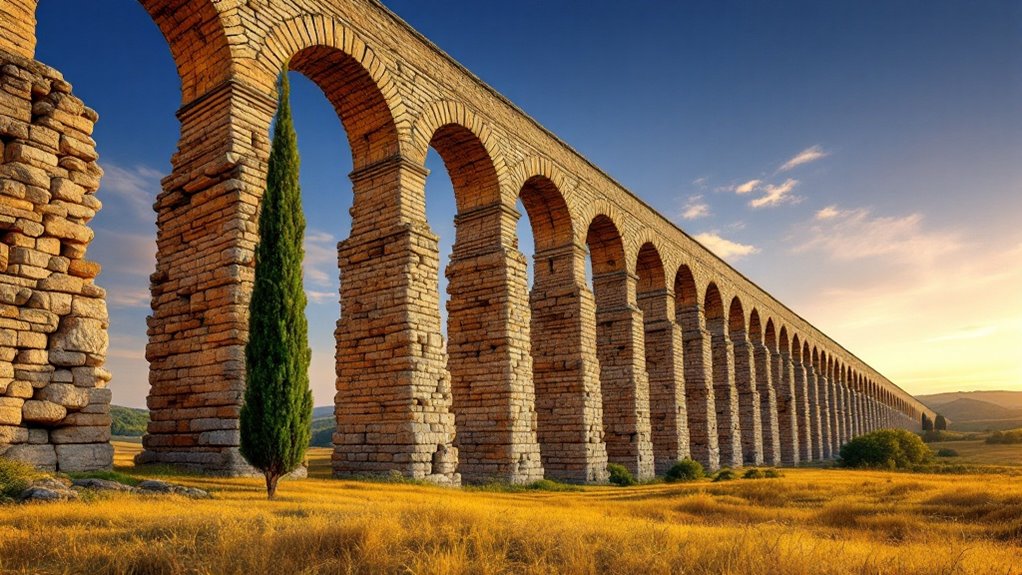
Standing as a demonstration of Roman engineering brilliance, the Los Milagros Aqueduct stretches an impressive 800 meters with 73 original pillars reaching heights of 25 meters.
You'll marvel at its alternating layers of red brick and granite, featuring three tiers of arches that showcase remarkable architectural precision.
Aptly named "The Miraculous One" for its exceptional preservation, this aqueduct stands as one of the best-conserved Roman water systems in existence.
As you walk along the protected green esplanade, you'll witness how this ancient structure transported water 12 kilometers from Proserpina Dam to Augusta Emerita, maintaining a precise 0.03% gradient.
The aqueduct's ingenious design includes staggered arcades that adapt to terrain changes, while its purification system featured a lime pool for sediment removal.
Today, you can explore this UNESCO World Heritage site free of charge, observing the engineering details up close and capturing stunning photos, especially during sunset.
Soaring gracefully in downtown Mérida, the Temple of Diana ranks among Europe's best-preserved Roman temples, though its name stems from a 17th-century historian's mistake.
Built in the 1st century AD under Emperor Tiberius, this architectural marvel features 19 original Corinthian granite columns and served as a center for imperial worship, not as a shrine to Diana. The temple's strategic location allowed it to dominate the intersection of two main Roman roads, establishing its prominence in ancient Emerita Augusta.
You'll find the temple seamlessly integrated into the city's fabric, with free exterior access and an interpretation center displaying fascinating excavation findings.
Its remarkable preservation owes much to its clever repurposing into a 16th-century noble palace.
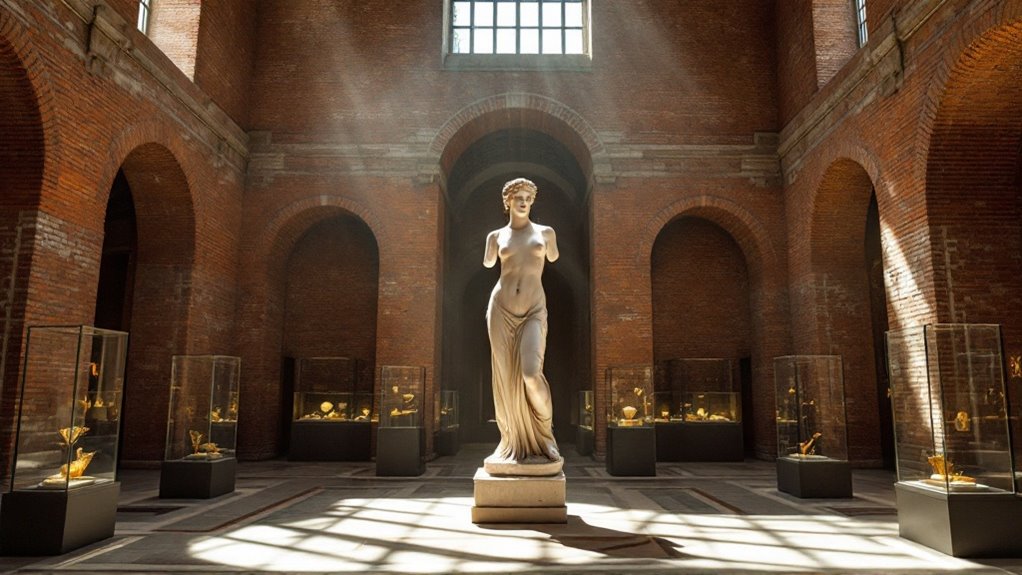
While the Temple of Diana offers a glimpse into Mérida's Roman past, the National Museum of Roman Art holds the city's most extensive collection of ancient treasures.
You'll discover over 36,000 artifacts housed in Rafael Moneo's innovative 1986 building, where Roman-inspired brick arches blend seamlessly with modern design elements. Under the leadership of Trinidad Nogales Basarrate, the museum continues to expand its research and exhibition programs.
The museum's glass floors reveal an ancient Roman road and necropolis beneath your feet, while zenithal lighting illuminates impressive collections of mosaics, sculptures, and everyday items.
Stand atop ancient Roman pathways through transparent floors as natural light showcases centuries of artistic and cultural heritage below.
Don't miss the stunning *Las Tiendas* mosaic or the first-century *Seated Ceres* statue.
Visit during weekday mornings for a quieter experience, and enhance your understanding through augmented reality exhibits that bring Roman life to life.
The museum's proximity to the UNESCO World Heritage Theatre and Amphitheatre makes it an essential stop on your Mérida itinerary.
Built in 835 CE, the Alcazaba Fortress stands as Spain's oldest Islamic fortification and offers visitors a remarkable glimpse into three distinct cultures.
Within its 10-meter-high walls, you'll discover a fascinating blend of Roman, Visigothic, and Islamic architectural elements, from repurposed granite blocks to elegant horseshoe arches. The fortress was designed by architect Abd Allah under the reign of Abd al-Rahman II.
The fortress's prime location near the Roman bridge made it essential for controlling trade routes and defending the city.
Today, as part of Mérida's UNESCO World Heritage ensemble, you can experience how three civilizations merged their architectural and cultural heritage into one remarkable structure.
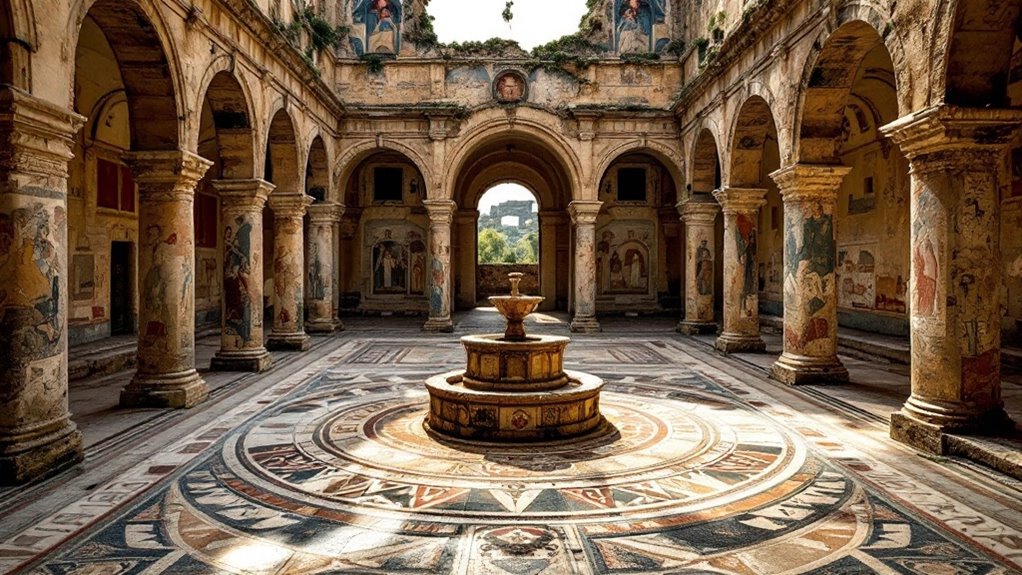
Stepping into Casa Del Anfiteatro transports you to an opulent 1st-century Roman residence where two interconnected houses reveal the daily lives of Mérida's elite.
You'll explore 11,000 square feet of luxurious living spaces centered around a colonnaded peristyle courtyard, complete with private thermal baths and sophisticated water systems connected to the San Lázaro Aqueduct.
Marvel at the exquisite floor mosaics depicting grape harvests and intricate geometric patterns, while lively frescoes and marble-clad Corinthian columns showcase the owners' refined tastes.
The house's layout, with its separate servant quarters and lavish dining spaces, offers insights into Roman social hierarchy. As part of the 22 component parts of Mérida's archaeological ensemble, this private residence exemplifies the city's remarkable preservation of Roman domestic architecture.
Visit between 9 AM and 6:30 PM in winter or until 9 PM in summer, and include it in your €15 archaeological pass to fully appreciate this remarkably preserved piece of Roman domestic life.
Located in a quiet residential area, Casa Del Mitreo showcases one of Mérida's most extraordinary mosaic collections from the 2nd century AD.
This significant Roman house was built between 1st-2nd centuries and reveals the luxurious lifestyle of its elite inhabitants.
You'll uncover the stunning Cosmological Mosaic, a masterpiece that offers unique insights into how Romans viewed the universe. This remarkable floor piece features allegorical representations that blend artistic beauty with cosmic symbolism.
The mosaic's exceptional preservation lets you step back in time and experience Roman artistry at its finest.
As you explore the house's various rooms, you'll find yourself surrounded by some of the best-preserved examples of Roman domestic architecture and decorative arts in Spain.
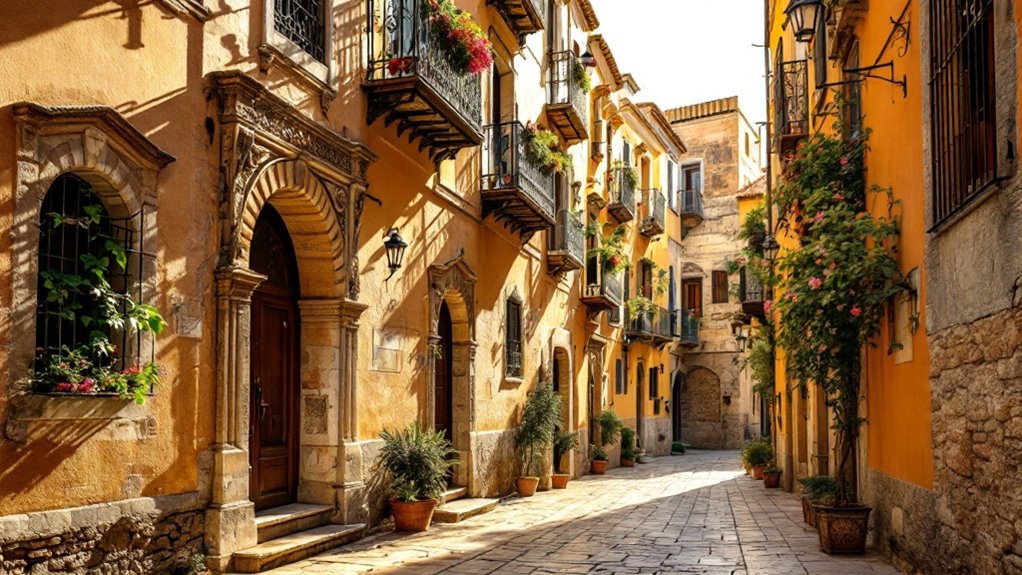
As you explore the fascinating Morería Quarter, you'll witness an extraordinary archaeological timeline spanning over 1,000 years of continuous habitation.
The 12,000-square-meter site reveals distinct layers of civilization, from 1st-century Roman foundations to Visigothic modifications and Moorish adaptations.
You can trace the evolution of urban planning through porticoed Roman roads and multi-phase housing blocks, including the impressive 3rd-century "Los Mármoles" domus.
Don't miss the architectural fusion where Roman engineering meets Visigothic brick-and-clay reinforcements.
Look for evidence of historical shifts in the preserved grid-like Roman layout that blends into medieval street patterns.
The neighborhood's name "Morería" itself reflects its Islamic heritage from 713-1230 CE, while excavated layers showcase overlapping Roman sewers, Visigothic housing, and Moorish structural elements. The site features the best-preserved Roman wall in the city, stretching up to eight meters high.
You will discover Mérida's ancient wonders tell a story spanning thousands of years. From the majestic Roman Theatre to the intricate mosaics of Casa Del Mitreo, each site offers unique insights into Spain's vibrant history. Whether you're crossing the Puente Romano or exploring the National Museum of Roman Art, you're walking through living history. Make time to visit this UNESCO World Heritage site – it's an unforgettable journey through time.